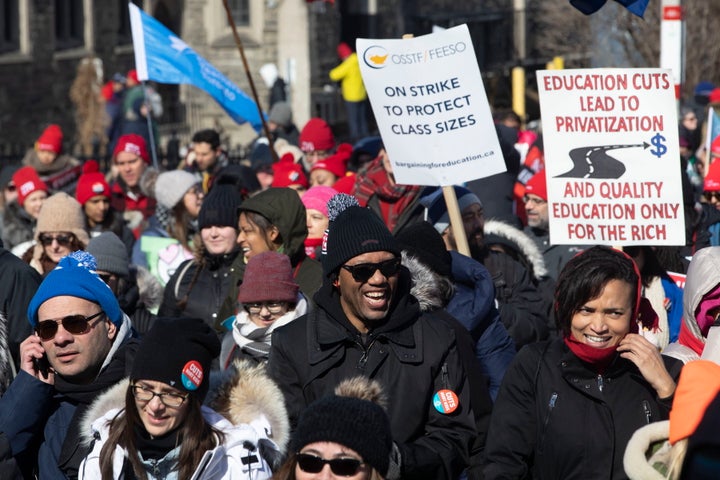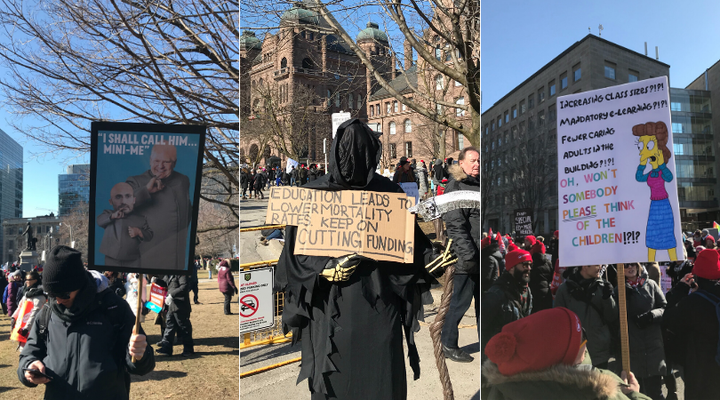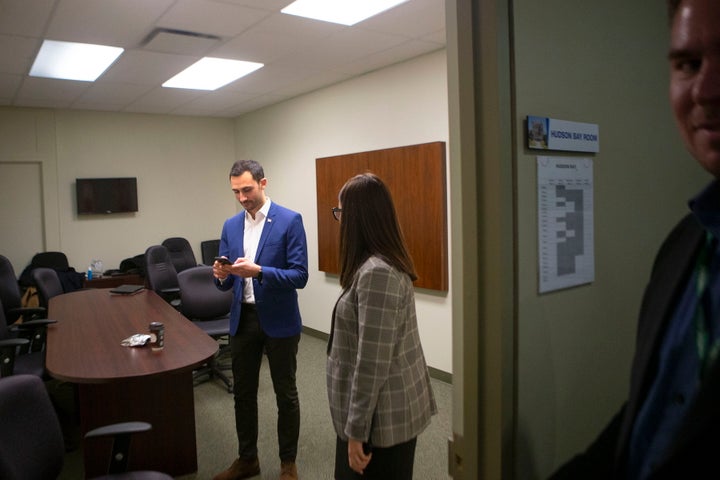TORONTO — The street that wraps around Ontario’s legislature teemed with thousands of striking teachers and their supporters Friday, as educators across four unions held a coordinated, province-wide walkout.
“This is a demonstration of unity,” Ontario Secondary School Teachers’ Federation (OSSTF) president Harvey Bischof told reporters at a press conference outside Queen’s Park.

“It’s a demonstration that we’re not divided from our members or from the public in this province.”
More than 200,000 teachers and education workers were on strike Friday, affecting more than two million students at 5,000 schools. It was the first time since 1997 that workers with all four unions have walked out on the same day.
“... we’re not divided.”
- Harvey Bischof
Demonstrators aimed their frustration squarely at Premier Doug Ford and Education Minister Stephen Lecce with signs calling them liars and accusing them of doing irreparable damage to the education system. One person, dressed up as the grim reaper, held a sign that read: “Education leads to lower mortality rates. Keep on cutting funding.”
(It’s true: people with little education tend to have higher rates of disease and mortality, according to Statistics Canada.)


Grade 8 teacher Anne Piper told HuffPost Canada she attended to send a message on class sizes, which the Progressive Conservative government wants to increase.
“I already can hardly teach the 18 in my homeroom and I have by far the smallest class in the school,” she said.
“I have 36 in one class and it’s more dangerous. It’s certainly less learning going on. There’s way more interruptions and you have kids with behavior problems that, even in a class of 20, derail the class.”
She said that of the 48 teachers at her school, 46 are willing to take a smaller raise in exchange for a cap on class sizes.
‘Don’t give them this fodder’
The government has said that the teachers are striking in order to get bigger raises. Unions have asked for raises matched to inflation, which is around two per cent, but the government passed a law in 2018 that caps raises for all public sector workers at one per cent per year.
“Drop the one per cent,” Piper said. “Don’t give them this fodder against us.”
The unions and the government have been embroiled in tense contract negotiations since late summer.

Lecce blames the strikes on the heads of the unions, and says his government is standing up to teachers that want evermore compensation.
“Your child should be in class; they should not be the casualty of union-led escalation,” he said in a statement Thursday evening.
“While union leaders are continuing to organize further disruption, our government remains focused on getting deals that ensure students are learning each and every day.”
The unions, on the other hand, argue that they’re standing up for parents who don’t support the government’s plans to increase class sizes and force high school students to take two courses online.
On Friday, Bischof said the point of the strike was to “make this government finally listen,” not just to teachers but also to parents.
“They don’t want bigger class sizes for their students. They’re not interested in this mandatory e-learning. They want the supports that education workers bring to their children, including kids with special needs and students at risk.”